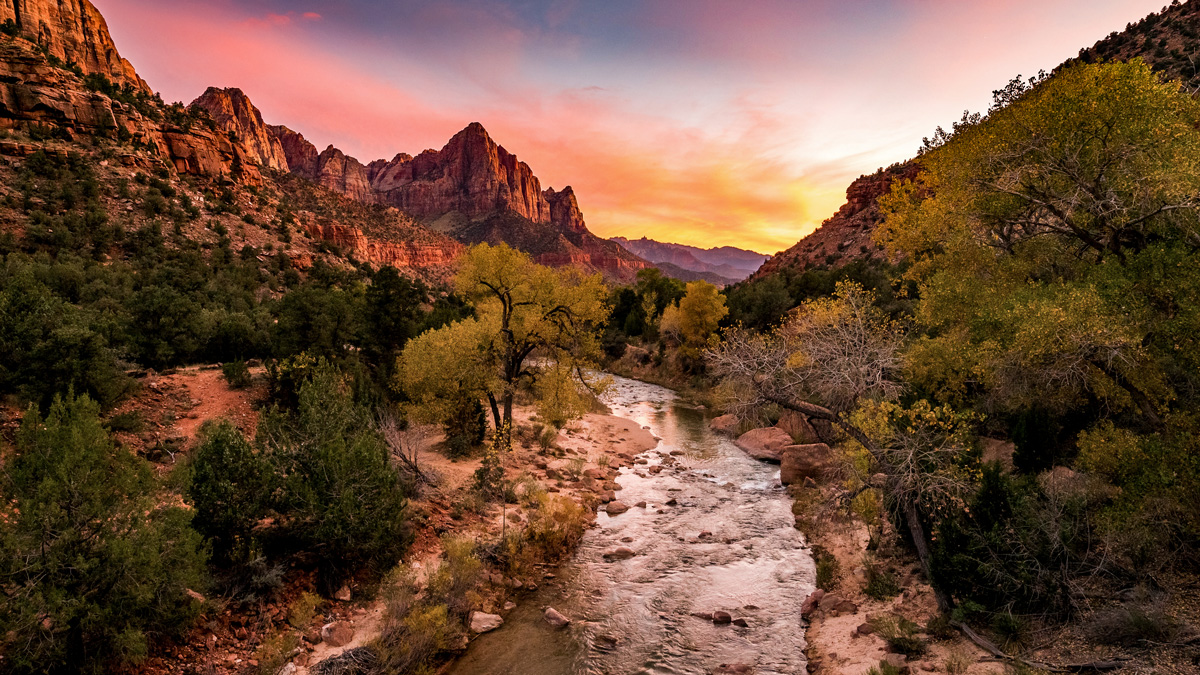
President in the Pocket of Big Oil stands in charge of National Treasures
When it comes to environmental issues, Donald Trump has not been a friend of the environment, and that is putting it lightly. Since entering office, Trump has pulled America out of the Paris climate agreement, repealed several eco-friendly acts from the Obama administration, and opened up federally protected land for privatization and extractive industries.
Most of this new real estate comes from National Parks, Forests, and Wildlife Refuges, all managed by the Department of the Interior. Aside from being areas of dense plant and wildlife, these spots are crucial parts of the American experience. They preserve some of the nation’s most breathtaking landscapes and deepest natural history. They are America’s last piece of what Henry David Thoreau would call “the sublime”—a term he barrowed from Immanuel Kant to describe nature’s unfathomable and soul captivating beauty.
Understandably, in a world undergoing a climate crisis, it may not seem imperative that world leaders preserve beauty per-se. Environmentally speaking, there are certainly bigger fish to fry right now. However, as stunning as National Parks are, they offer far more than just beauty. The Parks have ecological significance beyond measure and ignoring their importance now could actually have immense detriments to our ongoing battle against climate change.
Historically, the reason that Congress created the National Parks Service at the turn of the twentieth century was to preserve nature. Seeing the environmental detriments of overhunting and overfishing in certain areas of the country, conservationists realized that some of America’s most luscious wildernesses would soon disappear if they did not press for protection.
Because of this precedent, the National Parks to this day are places where animals and plants can run wild and fulfill their natural duties. Collectively, the Parks are homes to millions of trees across the nation. These untouched forests are enormous natural carbon drains. If we were to open up this land for consumption, we would run the risk of deforestation and losing these carbon-sucking plants, thus contributing immensely to global warming.
“We’re never going to solve the climate crisis … he is an oil president, his cabinet is an oil cabinet. He is bought off by fossil fuels, and a lot of people in the Senate, a lot of Republican candidates, are too, we can’t solve the problem when we have elected officials who are paid by the fossil fuel industry.”
– Jane Fonda
Similarly, if we allow for private industries to drill, mine, or develop on the land, then habitats would be lost, water could be contaminated, and lots of the Earth’s rich nutrients would be infringed upon. The same could go for hunting and fishing. While each of these latter two activities are sustainable in small doses, if overdone (particularly on corporate levels), then the victimized species could become threated quite quickly.
Consequentially, with an already unbalanced ecosystem, we cannot expect the world to respond to these changes in natural ways. Therefore, when we disrupt the pristine National Parks, we could inadvertently be accelerating the climate crisis.
Priceless Resources could be lost, Forever
Of course, the Parks have not gone entirely untouched in their hundred-plus year existence. With the advent of the automobile, the government built roads through the land, cleared campsites, and erected service buildings, allowing travelers to journey through and see everything the Parks have to offer. Throughout all of this, though, the Department of the Interior has always prioritized sustainability, making sure that the development is minimalist and that the guests remain frugal during their visits.
Trump, however, even wants the to privatize the Parks’ campsites. This means that the price of pitching a tent could go up—potentially making the traditionally affordable Parks an exclusive luxury. More importantly, though, if the camps become privatized, there is hardly as much of a grantee that they will remain eco-friendly. For one example, the privately owned camps could have more lenient rules when it comes to sanitation and littering. Clutter and trash will not only hurt the Parks aesthetically, but it will also hurt them environmentally, as ecosystems will not be able to thrive with improperly disposed plastic and Styrofoam taking up space.
Moreover, if the Trump privatizes the camps, who’s to say that the buck will stop there? Given Trump’s environmental record and business mind, perhaps the “camps” will eventually not be “camps” at all. Perhaps they will evolve into full-on resorts with hotels, pools, and parking lots paved over the land that Americans have treasured and fought so hard to protect for generations.
Granted, there is nothing wrong with a little tourism in our National Parks. In fact, even extractive industries have their merit at times. If people did not have the chance to appreciate and gain from the Parks, then we would probably not prioritize them as much as we do. Nevertheless, the Parks do more than just please the eye. They are natural oases for many species, each contributing a vital part to an ecosystem. This keeps the natural world in check and if it goes unchecked, then we will be sacrificing far more than just the animals, plants, and views. The ultimate burden will always come back to people.
Find books on Big Tech, Sustainable Energy, Economics and many other topics at our sister site: Cherrybooks on Bookshop.org
Enjoy Lynxotic at Apple News on your iPhone, iPad or Mac and subscribe to our newsletter.